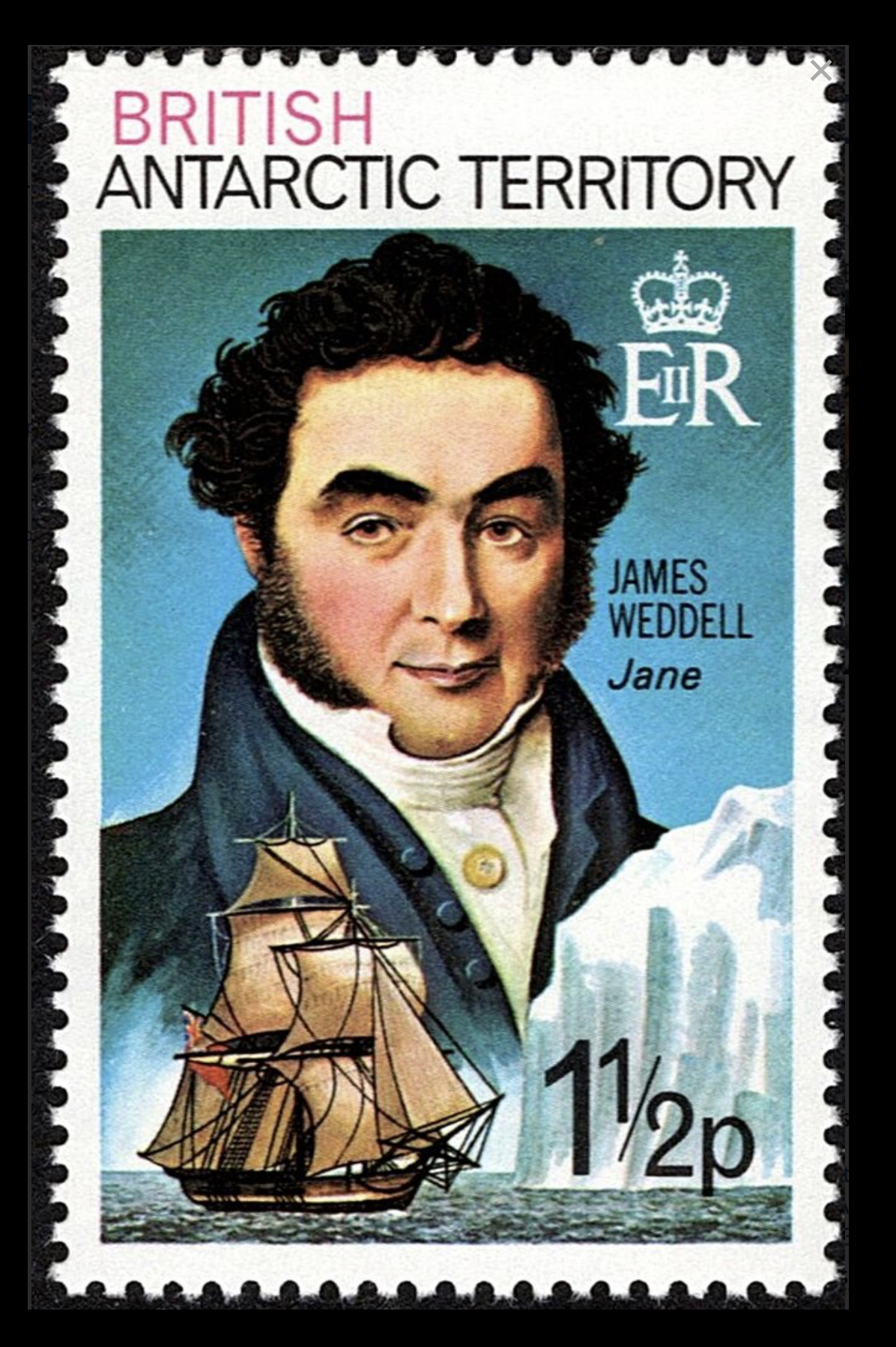James Weddell (British Antarctic Territory)
The Stamp
 The stamp was released on 14 February 1973 in the British Antarctic Territory. It was part of a series of stamps showing Arctic explorers and their ships (or, in two cases, aeroplanes). James Weddell and his ship, the Jane, are shown on the stamp. The stamp was worth 1½ pence.
The stamp was released on 14 February 1973 in the British Antarctic Territory. It was part of a series of stamps showing Arctic explorers and their ships (or, in two cases, aeroplanes). James Weddell and his ship, the Jane, are shown on the stamp. The stamp was worth 1½ pence.
The British Antarctic Territory is a sector of Antarctica claimed by the United Kingdom as one of its 14 British Overseas Territories. It is the UK’s largest Overseas Territory, comprising the region south of 60°S latitude and between longitudes 20°W and 80°W, forming a wedge shape that extends to the South Pole. The Territory was formed on 3 March 1962, although the UK's claim to this portion of the Antarctic dates back to letters patent of 1908 and 1917.
The Subject
James Weddell FRSE (1787 – 1834) was a British sea captain who, on a seal hunting expedition in 1823, sailed to the southernmost position any ship had ever reached at that time. The Weddell Sea was named after James Weddell as was the Weddell seal.
Urology Connections
98% of all urinary stones are made of calcium oxalate, calcium phosphate, urate, struvite or cystine. 80% of all stones are calcium stones, and up to 80% of calcium stones are made of calcium oxalate. Calcium oxalte has two main crystalline forms, calcium oxalate monohydrate (known as Whewellite) and calcium oxalate dihydrate (known as Weddellite).
Weddellite was described in 1936 by Frederick Allen Bannister (1901 - 1970) and Max H Hey (1904 - 1984) of the British Museum. However, the name only appeared in 1947, in a paper by Edwin Prien (1937 - 1922) and Clifford Frondel (1907 - 2002). It was named after the place it was found, the Weddell Sea in Antarctica - and this, of course, was named after James Weddell.
← Back to Stamp Collection